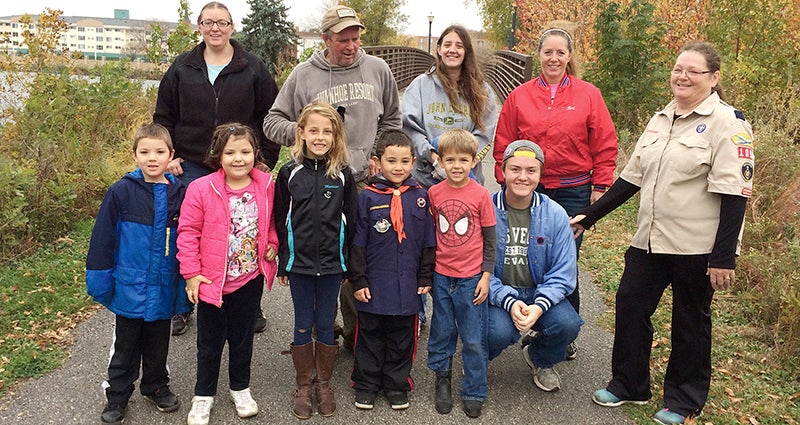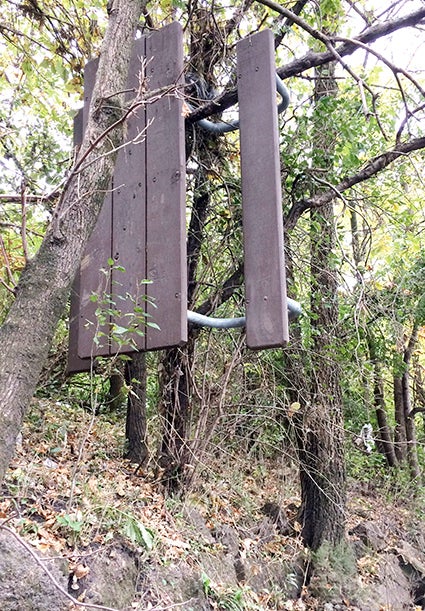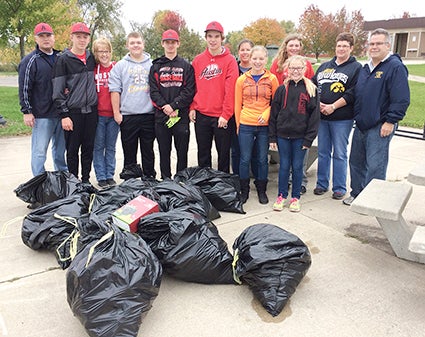With trash bag in hand, everyone can help with water quality
Published 9:56 am Thursday, October 27, 2016

- Volunteers have helped clean up the Cedar River recently through various efforts and events. Photos provided
Tim Ruzek
Fields, Streams & Rivers
You never know what you’ll find during a river cleanup, especially after a major flood.
There are plenty of the usual litter items — plastic bottles, aluminum cans, plastic bags and food wrappers. Yet, there are also some finds that make you wonder.
Just a few weeks ago, I looked up to find a picnic table hanging from a tree above me while walking the Cedar River’s south shoreline behind Austin’s bandshell for a river cleanup. A vivid reminder of the power of floodwater.
A few hours earlier wading Austin Mill Pond downtown, some of the shoreline oddities included a couple of combs and a toy fishing boat with a wind-up motor. The boat probably hit dry land after a wild ride during the Sept. 21 flood from somewhere upstream.
On a riverbank in Lafayette Park, I found a peel-back beer can likely from the 1970s. Filled with dirt and heavily rusted, the can likely had been littered a long time ago in the river only to be coughed up from the river bottom by the recent flood.

Picnic table hanging from a tree above me while walking the Cedar River’s south shoreline behind Austin’s bandshell. Photo provided
River cleanups often are dirty, wet and tiring efforts, especially if it involves getting in the water. They also often are great experiences in being outside improving our natural resources and providing a visual reward at the end when you see the pile of garbage removed from the river.
People of all ages (younger kids with adult supervision) can help clean up our Cedar River State Water Trail and other local waterways. You don’t need a canoe or waders, and you don’t have to get in the water.
Just grab a bag and gloves. Litter pickeruppers — about $10 to $15 — also come in handy (especially for plastic bags stuck in branches) and can save your back.
Cedar River Watershed District has led a local Adopt-A-River initiative since 2011 in which dozens of volunteers have removed many tons of garbage and flood-related debris from the Cedar River State Water Trail’s 25 river miles in Minnesota. More than 1,100 tires also have been removed from the river through the CRWD initiative.
This season has involved more river cleanups but unfortunately several of our Adopt-A-River volunteer groups have had trouble getting out on the river due to a rainy season (one of the wettest on record).
Austin’s VFW Club, though, was able to do its adopted route — Austin Mill Pond — and more on Oct. 15 as part of the CRWD’s Adopt-A-River program. VFW staff along with members of VFW-sponsored youth sports teams and Scouts groups and their relatives walked the Mill Pond’s shorelines and filled the back of a pickup truck with trash bags.

Volunteers have helped clean up the Cedar River recently through various efforts and events.
Photos provided
They easily could have called it quits after that but the group chose to move on to the flood-affected Driesner Park area to remove more litter.
I worked with the VFW group that morning before joining the Austin High girls swimming team and its coaches at the bandshell for another river cleanup. The team’s project came together thanks to the United Way of Mower County’s annual Day of Caring event.
The swimmers picked up litter along the Cedar River and adjacent park areas from the Roosevelt Bridge down to Marcusen Park baseball stadium. They filled many more bags with litter and helped beautify one of Austin’s best public areas.
Working together, our community has made major strides in cleaning up the Cedar River. If you are interested in river cleanups for 2017 — either as a volunteer or to adopt one of the CRWD’s cleanup routes — please contact me at 507-434-2603 or truzek@mowerswcd.org.
Mower SWCD provides technical assistance to landowners with conservation practices that protect land and water resources. SWCD also administers the Cedar River Watershed District to improve water quality and reduce flooding. This column runs monthly on the last Thursday. For more, visit the Mower SWCD and CRWD websites and Facebook pages. Comments can be sent to tim.ruzek@mowerswcd.org.
Tim Ruzek is the water plan and outreach coordinator for the Mower Soil & Water Conservation District and the Cedar River Watershed District.


